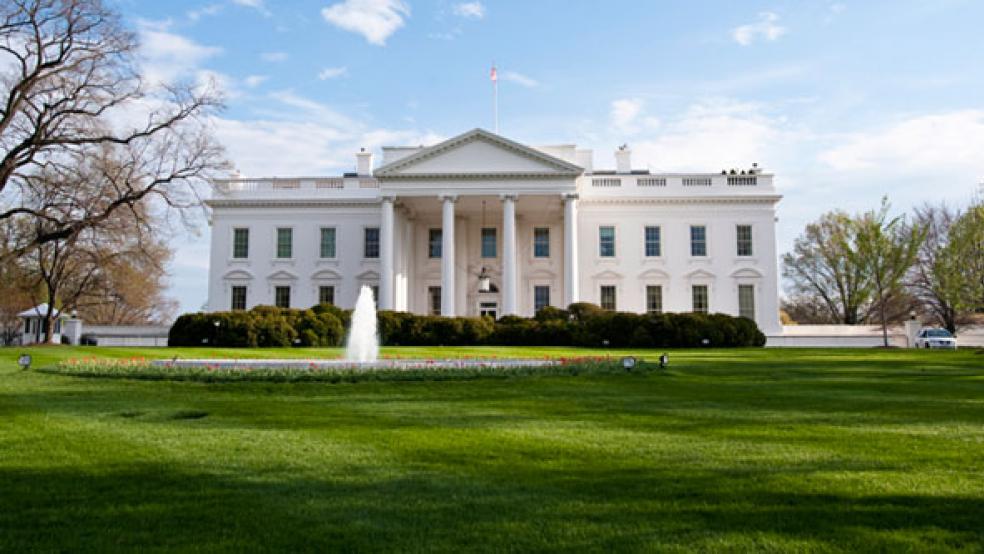Did the Trump administration signal a sharp change in direction for enforcement of affirmative action provisions within the Department of Justice? Or did a newspaper misread a job posting and leap to a conclusion? The answer could be somewhere in between, and it might benefit everyone to maintain ambiguity until we know more.
Late Tuesday evening, The New York Times reported that the Department of Justice had begun preparations to redirect its civil-rights enforcement resources to universities and colleges “deemed to discriminate against white applicants.” The source for the story was an internal DOJ job-opening announcement for a position involving “investigations and possible litigation related to intentional race-based discrimination in college and university admissions.” That description, The Times’ Charlie Savage wrote, “suggests” that the group working on this issue would work out of the Civil Rights Division’s “front office,” where political appointees work, rather than by career prosecutors within the division.
Related: Rights Groups Assail Justice Department Over College Race Probe
The project, Savage reported, “is another sign that the civil rights division is taking on a conservative tilt under President [Donald] Trump and Attorney General Jeff Sessions.” This fits a particular media narrative about both men, but especially Sessions, who had to answer accusations of racism in his Senate confirmation hearing. It didn’t take Rep. Maxine Waters – one of the most vociferous critics of Sessions’ appointment – to say I told you so. “Sessions is a threat to our democracy,” Waters tweeted, “working to reverse civil rights gains in college admission, police misconduct, & justice reform.” Media outlets picked up the story with histories of affirmative action and the political fallout that might come from challenging it.
But does a single job announcement that never mentions affirmative action signal such a challenge? The DOJ pushed back on The Times story on Wednesday, telling ABC News that the “personnel posting” did not reflect any policy changes. “It does not reflect a new policy or program or any changes to long-standing DOJ policy,” the ABC source told them. Later, DOJ spokesperson Sarah Isgur Flores explained that the new position has nothing to do with reverse discrimination against whites.
“The posting sought volunteers to investigate one administrative complaint filed by a coalition of 64 Asian-American associations in May 2015 that the prior Administration left unresolved,” Flores announced in a written statement issued late on Wednesday. “The complaint alleges racial discrimination against Asian Americans in a university’s admissions policy and practices.”
The denial did not get as much press as the initial report, of course. That may be due to the length of time for detailed pushback to emerge from the DOJ to The Times’ article and the multitude of follow-ups at other media outlets. It could also be because the media leaps first when it comes to narratives about the Trump administration and its motives.
To be fair, a change in affirmative action enforcement might still be in the offing – if not in this particular context. A poll taken by The Washington Post and ABC News during the Republican presidential primary shows why. When asked about unjust outcomes from preferences, Trump supporters were far more likely to see unjust outcomes that penalized whites as a greater problem than those that penalized blacks and Hispanics, 54/12, while the overall sample said the opposite by a 40/28 margin.
Related: U.S. Sues Oracle, Alleges Salary and Hiring Discrimination
Trump, who won the presidency with his appeals to white working-class voters in economically distressed regions, understands that his base sees affirmative action as an anachronism at best. That’s hardly a novel view; it’s shared by movement conservatives as well, and at times by the Supreme Court. In 2015, the court ruled in Schuette that the state of Michigan could end its affirmative action programs, upholding the results of a state-wide referendum on the policy. Any hint that the White House will consider whether to change directions on affirmative action will help stoke enthusiasm from Trump’s political base.
This would be a curious first step in that direction, however, which was another reason to exercise caution on this story. While the court ruled in Schuette that government was not required to keep affirmative action programs, it then ruled in Fisher last year that affirmative action meets constitutional muster. Justice Anthony Kennedy, writing for the majority, declared that the state of Texas had a “compelling interest that justifies race in college admissions” in gaining “the educational benefits that flow from student diversity.”
Among the specific benefits of that diversity are “ending stereotypes,” promoting “cross-racial understanding,” preparing students for “an increasingly diverse workforce and society,” and cultivating leaders with “legitimacy in the eyes of the citizenry.” Texas presented data from a study that satisfied the court that “its race-neutral policies and programs did not meet its goals.” The main dissent from Justice Samuel Alito objected not on the basic constitutionality of the program but on whether it was narrowly tailored enough to meet the state’s compelling interests.
Related: U.S. Sues Oracle, Alleges Salary and Hiring Discrimination
A frontal assault on affirmative action through lawsuits against universities and colleges does not appear to be the most effective or fruitful strategy. Nor does it immediately impact the Rust Belt’s working-class families that form Trump’s base. If the administration wanted to take on affirmative action, they could do so in the executive branch first. In signing an omnibus bill this spring, Trump added a statement that hinted at ending set-asides for gender and ethnic-based grants. Trump could also end set-asides for women and minorities in federal contracts without getting the Department of Justice involved at all. That might have a more direct impact on the voters of Trump’s base, although it might not all be positive.
An even more popular approach with those voters would be to rein in the Equal Employment Opportunity Commission (EEOC), which has recently expanded its traditional mandate from discrimination against women and minorities to transgender status, gender identity, and sexual orientation. The EEOC’s website notes that the merit rate for complaints in FY2015 was only 18.1 percent, suggesting that the expanded mandates are not capturing a lot of actual injustice. That approach would also avoid tinkering with the DOJ’s Civil Rights Division, and might address frustrations from smaller business owners more directly.
There’s another reason for some healthy skepticism, too. If the Trump administration planned to take on affirmative action as a means of firing up its base, they would have announced those efforts themselves rather than rely on The Times to figure it out from an obscure job posting. Perhaps the president and/or the attorney general does plan to pursue it, but it seems doubtful that they would choose this strategy for it and this method of signaling the policy to their supporters. If they do plan to change direction on affirmative action, though, they should be prepared for the media to get it wrong.






